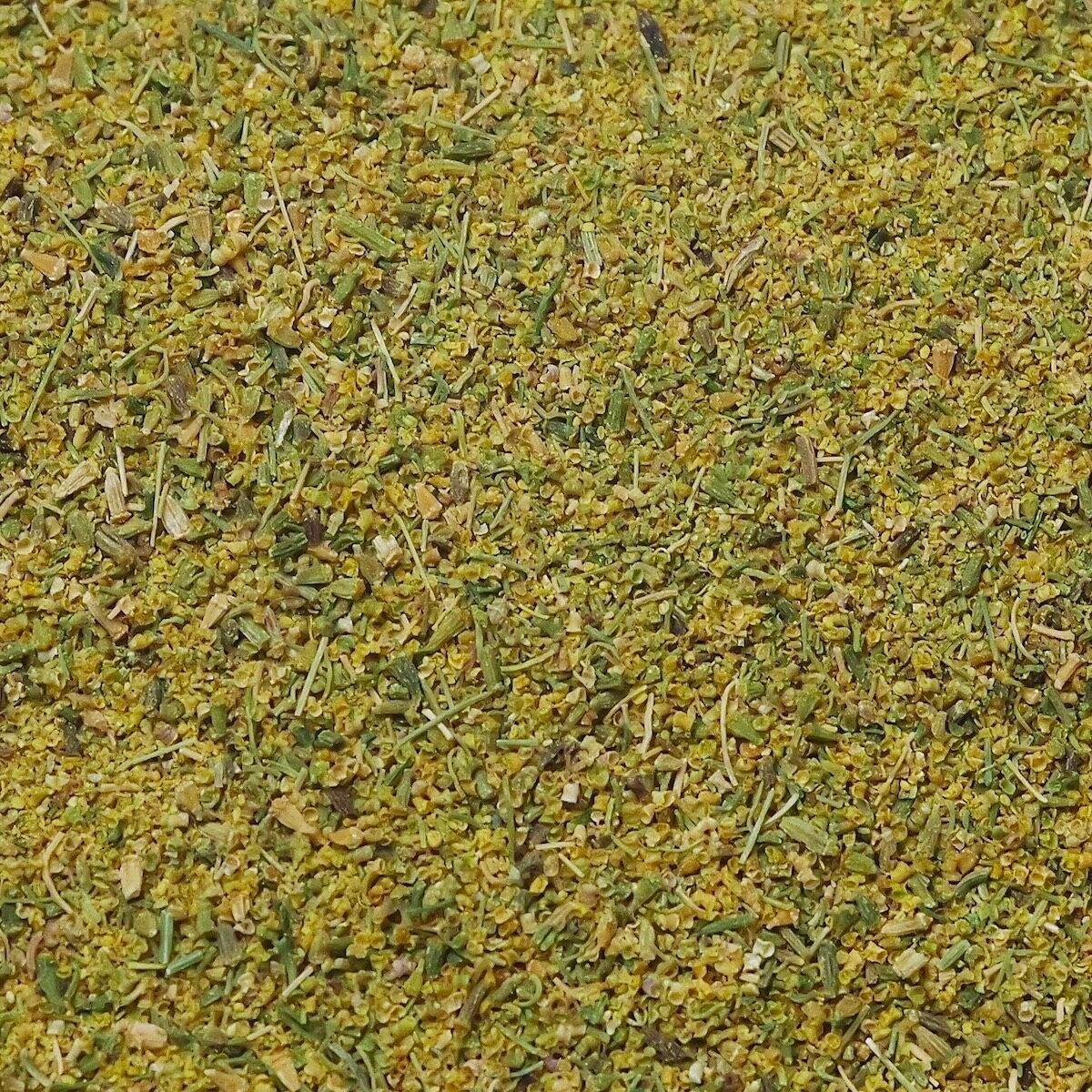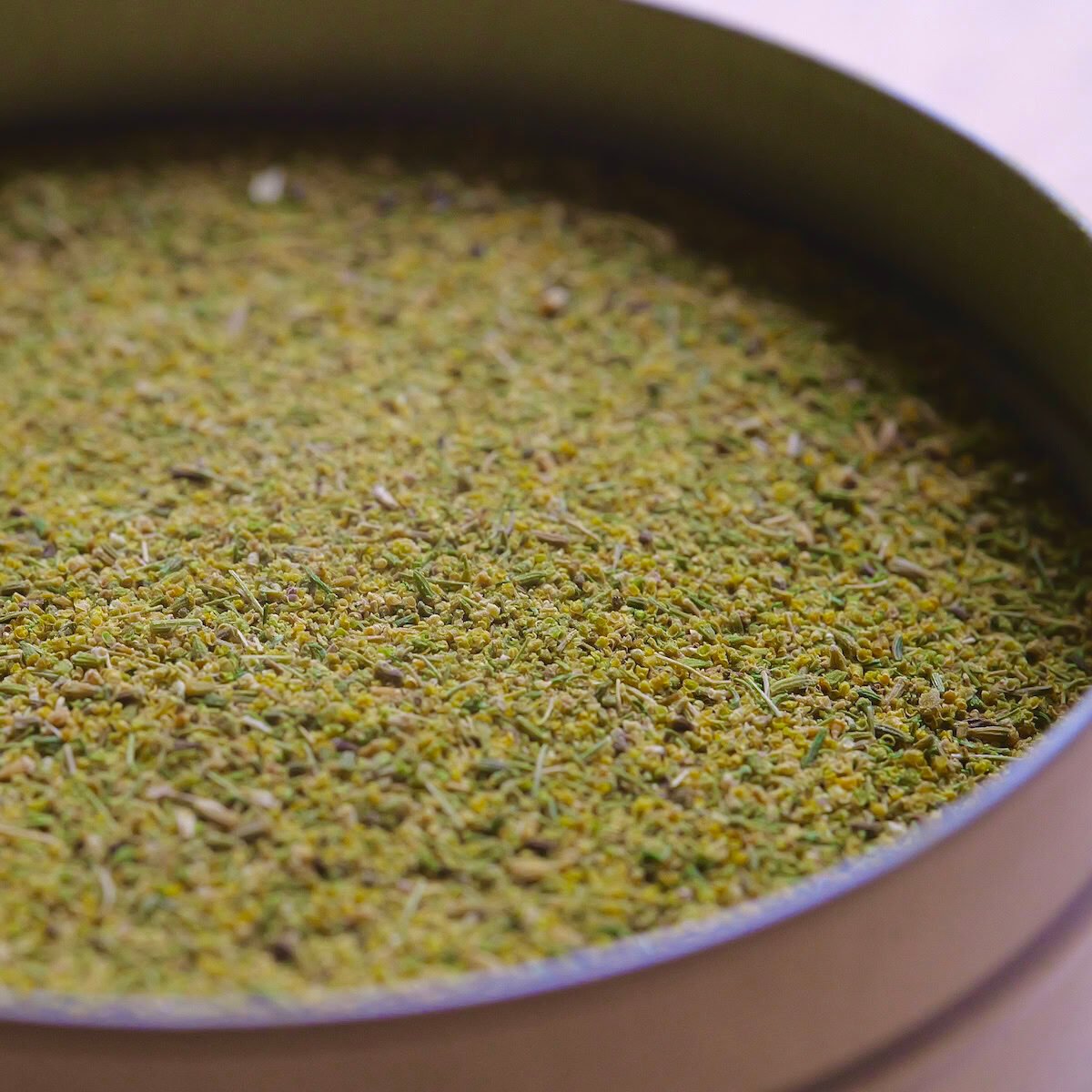Dill Pollen
Dill pollen is the spice produced from the blossoms and attached pollen of the dill plant (Anethum graveolens), an annual flowering herb in the parsley family.

REGION OF ORIGIN
Dill originated in the Eastern Mediterranean and Middle East. However, dill pollen as a distinct spice gained popularity in the late 20th century from its cultivation and promotion in California, where dill thrives in the Mediterranean climate.
PART & COLOR
Dill pollen is powdery, but can also have a slightly rough texture since the finished spice includes both fine pollen and small bits of dried dill blossoms. It's either a bright, vibrant yellow or a more muted golden color depending on the variety and maturity of the flowers at harvest.
HARVEST
Dill is a fast-growing annual herb that is sown in the spring. The harvest of the pollen is a one-time event each season, typically in the late summer or early autumn when the flowers are in full bloom. The flowers are carefully collected by hand and then sifted with a fine mesh sieve to separate the pollen from the flower heads. Each flower yields a minuscule amount of pollen, so it takes thousands of flowers to produce a usable amount, contributing to its rarity and high cost.

FLAVOR & AROMA PROFILE
Dill pollen captures the very soul of the dill plant, distilling it into a potent spice. Its aroma is a vibrant burst of fresh, herbaceous notes with a prominent anise-like sweetness that mingles with citrus and honey. On the palate, it offers a blend of flavors that mirror its aroma, but with even more force. It's a uniquely powerful seasoning, heady and multi-layered.
Dill pollen seems to possess a dimension of the sublime, more so than the fresh leaves or dried fruits. It has an extraordinary air about it that professional chefs and home cooks alike are turning to for a novel stroke of sophistication. Due to its delicate, powdery texture and concentrated flavor, dill pollen is ideally used as a finishing spice.
CULINARY USES
Dill pollen has earned the distinguished title "the caviar of herbs" due to its rarity and elegance. Its herbal sweetness complements the richness of egg dishes like deviled eggs, omelets, and frittatas, as well as creamy cheeses like ricotta, labneh, and goat cheese. It can also be incorporated into bread dough, pastry fillings, and even desserts.
It pairs particularly well with citrus fruits, making it an excellent addition to lemon cakes and tarts. It can be sprinkled over grilled or roasted vegetables as well, such as asparagus, carrots, or zucchini. But some say this exquisite spice pairs most wonderfully with seafood as it elevates the delicate flavors of fish, especially grilled salmon.


